The 16 Best Outdoor Shade Plants for Spots That Don't Get Sunlight
No sunshine? No problem.

Strathroy/Getty Images
Fact checked by Emily Peterson
As the temperature rises, it’s a great time to get out there and garden. While it would be nice to have a huge sunny backyard to grow lots of different plants, that isn’t the case for many of us. But the good news is that while a lack of sunlight can be somewhat limiting, there are still plenty of good outdoor shade plants to choose from. Whether you have a small covered patio, a city balcony, or a backyard with lots of large trees, here are the best outdoor shade plants perfect for spots that don’t get a lot of sunlight.
Related: 40 Drought-Tolerant Plants That Will Improve Your Home's Curb Appeal
Caladiums
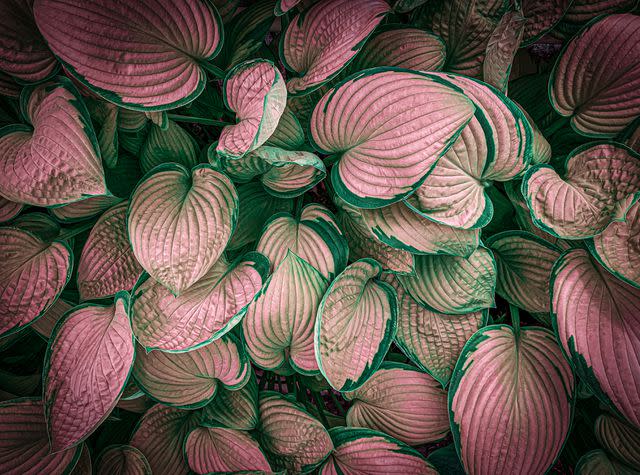
Getty Images
Zones: 9 to 13
Water: Keep plant slightly moist
Soil: Rich, well-drained
Light: Full to partial shade
Kaylyn Hewitt, lead floral designer at The Bouqs Co tells me: “I am so passionate about growing in small spaces. My own small patio in California has seen many different iterations and I’ve had to work with what I have, and it has turned into something I love.”
Hewitt is a big fan of growing caladiums in window boxes. “I love the variegation on their leaves. It’s fun to play with color.”
Columbine
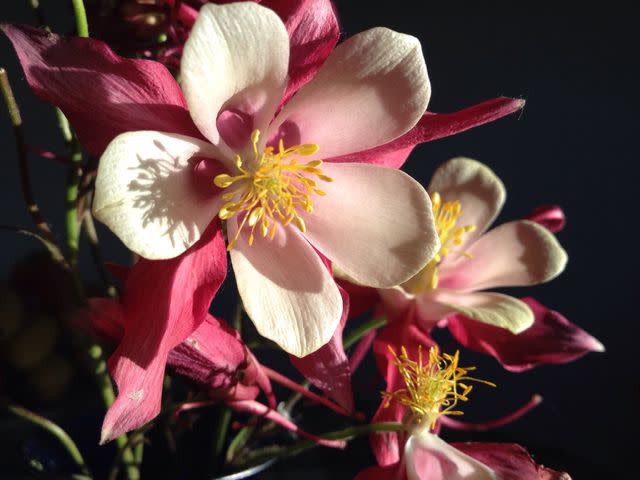
Zones: 3 to 8
Water: Keep soil moist
Soil: Sandy, well-drained
Light: Partial shade
Columbines grow as wildflowers, but are also cultivated for shade gardeners. You'll find them in a rainbow of colors, including red, pink, yellow, blue, purple, and white, and they bloom in late spring and early summer.
Astilbe
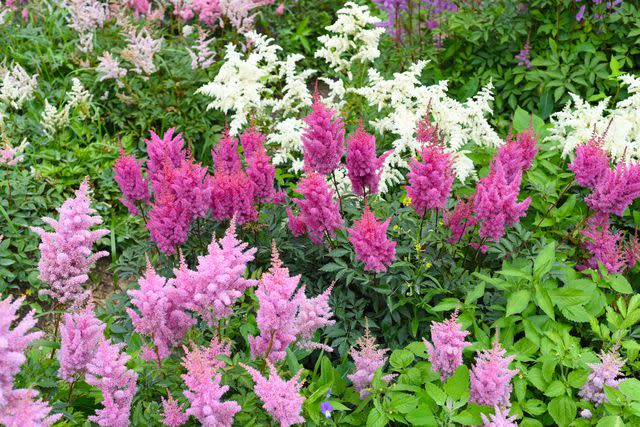
Tatiana Terekhina/Getty Images
Zones: 4 to 8
Water: Keep the plants moist
Soil: Well-drained soil
Light: Full sun to full shade
Feathery, brightly colored blooms last for weeks on this pretty shade-loving perennial, in shades of pink, red, purple, and white. These plants thrive in shady spots, and need to be kept moist to thrive.
Related: How to Create More Shade in Your Backyard
Lily of the Valley
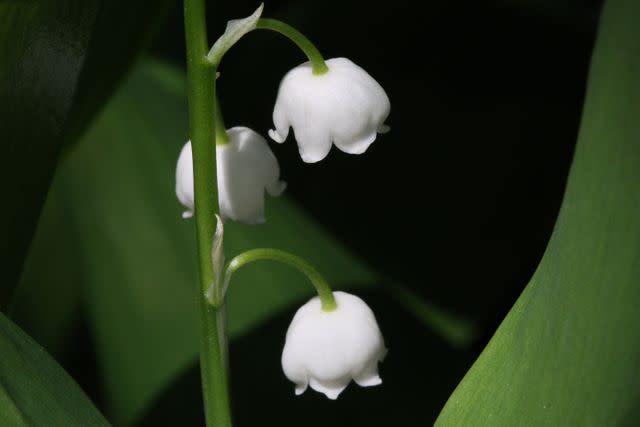
Getty Images/NurPhoto
Zones: 3 to 8
Water: Well-drained
Soil: Well-drained
Light: Partial to full shade
If you're looking for ground cover to spread over the shady spots in your garden, look no further—lily of the valley may be just what your garden needs. Lily of the valley is a spring showstopper, with its long stems covered in delicate, bell-shaped blooms, (And afterward, you can enjoy the bright green foliage.)
Begonia
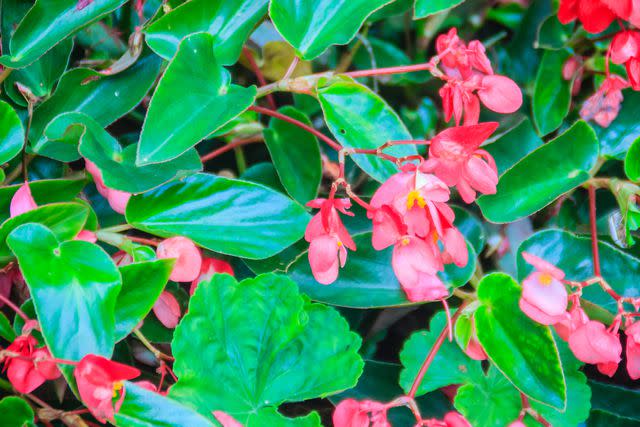
Zones: 9 to 11
Water: Keep soil lightly moist
Soil: Loamy, well-drained
Light: Partial to full shade
Begonias are a flower garden staple, with their bright blooms and their ability to thrive in shade or partial sun. They can be perennials in the warmest parts of the country, but tend to be annuals everywhere else.
Impatiens
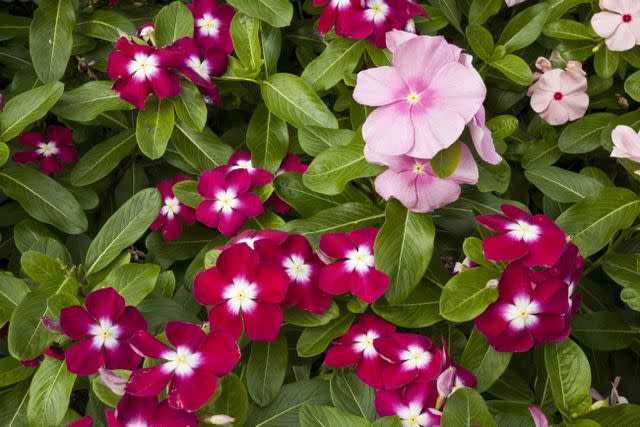
Getty Images
Zones: 10 and 11
Water: Keep moist
Soil: Rich, well-drained
Light: Partial to full shade
Impatiens are easy to grow in places that lack an abundance of sunlight. “I’ve gotten the most mileage out of just one tray of Impatiens. They grow to be very full in partial shade and their colors instantly brighten up a space,” Hewitt explains.
The only issue to consider is that these flowers need some shielding from the wind. So if you live in a windy climate, it’s best to consider another shade-friendly option.
Keep in mind that while it works as a perennial only in the warmest parts of the country, it's a super-popular annual plant everywhere else.
Related: 20 Impossible-to-Kill Outdoor Plants
Hosta
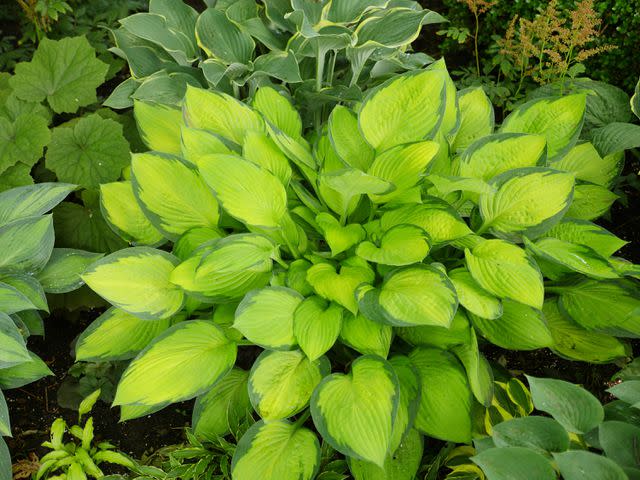
Zones: 3 to 9
Water: Keep soil moist
Soil: Loamy, well-drained
Light: Full to partial shade
This easy-to-grow shade perennial looks like it's tropical with its large, variegated leaves. During the summer, tall stems with long-lasting flowers perch above the plant. If you're looking for a hardy perennial, this one will reappear in your garden year after year.
Nasturtium
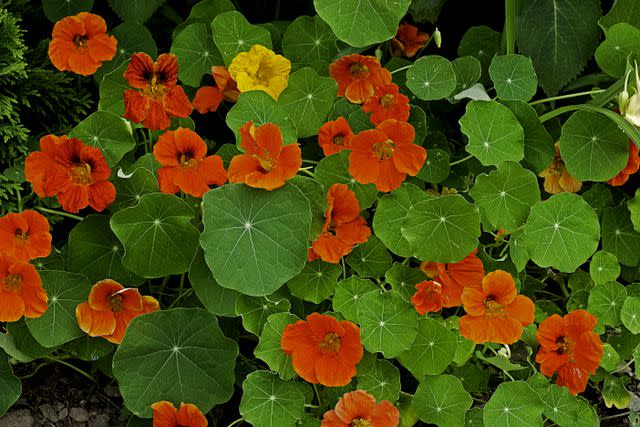
Getty Images
Zones: 9 to 11
Water: Weekly watering
Soil: Moist, well-drained
Light: Full to partial sun
Pretty nasturtium does well in shadier spots. So, it's a smart choice for outdoor spaces with partial sunlight—especially in hotter regions, where it will do best with some cover from the hot sun. “I love how it trails in containers," Hewitt says.
The beautiful orange, red, white, and yellow blooms add a cheerful pop of color to any outdoor space. These flowers are also edible and have a mustard-like taste—making them the perfect garnish for chic summer salads.
Related: Edible Flowers You Can Grow in Your Garden
Alocasia 'Regal Shields'
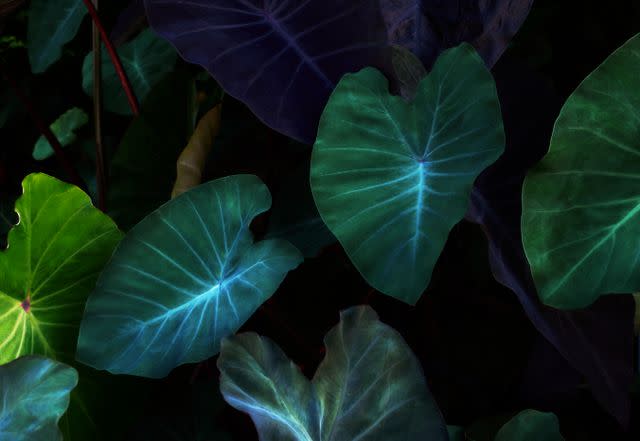
Getty Images
Zones: 9 to 11
Water:
Soil: Moist, well-drained
Light: Full or partial sun
The Sill's plant expert, Paris Lalicata, loves growing houseplants outdoors in shader spots during the spring and summer months such as Alocasia 'Regal Shield.' “There are some really beautiful options you can start incorporating outdoors in full shade once temperatures are consistently above 60 degrees Fahrenheit during the day and night.”
This tropical evergreen plant is also known by its common name—the elephant ear plant. With beautiful foliage, it has large, somewhat ruffled leaves that have a dark green hue and purple undersides. They can even grow up to five feet tall.
Virginia Bluebells
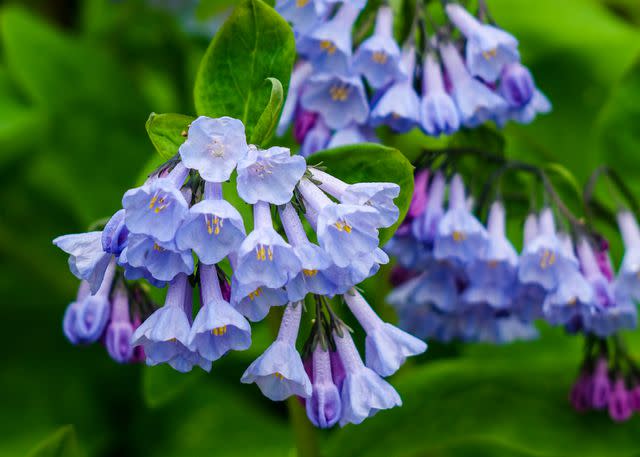
Zones: 3 to 8
Water: Keep soil moist
Soil: Moist, fertilized soil
Light: Partial to full shade
Bluebells have a similar look and feel to lily of the valley, but with delicate blue blooms in lieu of the white lily of the valley. They are native wildflowers that regularly crop up under trees in the forest, so they adore shady spots. Keep the soil moist to help your bluebells thrive.
Bleeding Heart
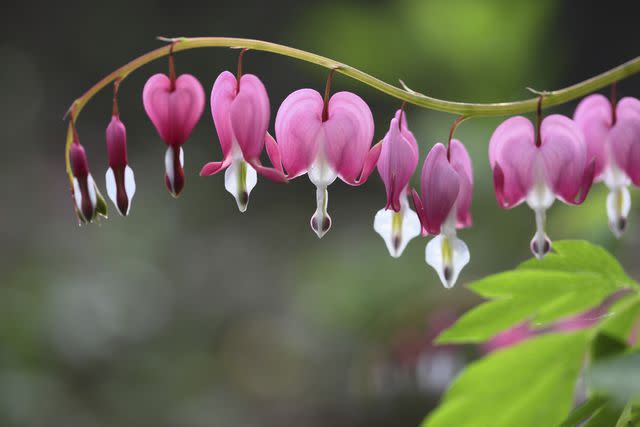
Zones: 3 to 9
Water: Keep lightly moist
Soil: Moist, well-drained
Light: Full to partial shade
These sweet pink heart-shaped blooms make a lovely addition to a shade garden, popping up for several weeks in the spring. You'll find bleeding heart in shades of pink, white, and red.
Jack in the Pulpit
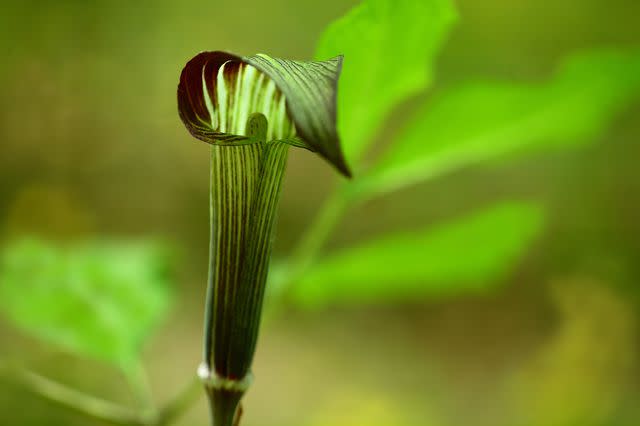
Zones: 4 to 9
Water: Keep plants moist
Soil: Moist, boggy
Light: Full to partial shade
This native plant pops up in the shadiest parts of the forest, and can be a beautiful—if unexpected–addition to a shade garden. Because it loves especially moist soil, consider including it in a rain garden in your yard.
Related: How to Make a Rain Garden
You'll see its distinctive, green and purple blooms pop up in spring.
Monstera Deliciosa
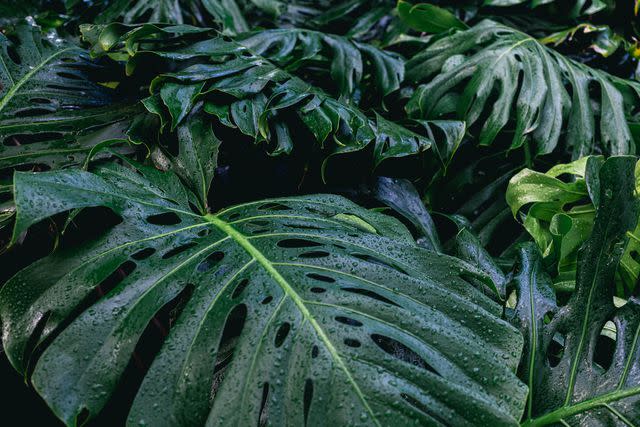
Getty Images
Zones: 10 to 12
Water: Weekly watering, and regular misting of the leaves
Soil: Well-drained
Light: Partial shade
Monstera Deliciosa is one of the most popular houseplants right now. It can also be grown outside and then brought in during the colder months. “The best practice is to always do the research on a particular plant's light requirements to make sure they are getting enough [but] not too much!" Lalicata advises. "If you live in a more tropical climate year-round, the plants mentioned can be left outdoors year-round as long as they are not exposed to frost or freezing temperatures.”
Trillium
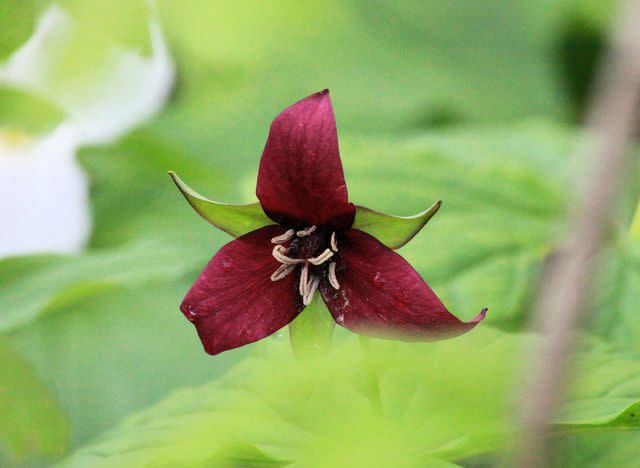
Zones: 4 to 9
Water: Water regularly in spring, but hold back in summer
Soil: Rich, well-drained
Light: Partial to full shade
These lovely spring bloomers are famous for the three-petaled blooms, which come in shades of red, pink, white, and yellow.
Related: How to Create a Pollinator-Friendly Garden
You'll need to water the flowers regularly as they establish and during their spring blooming season, but you can hold off during the heat of summer, when the plant goes dormant.
Ferns
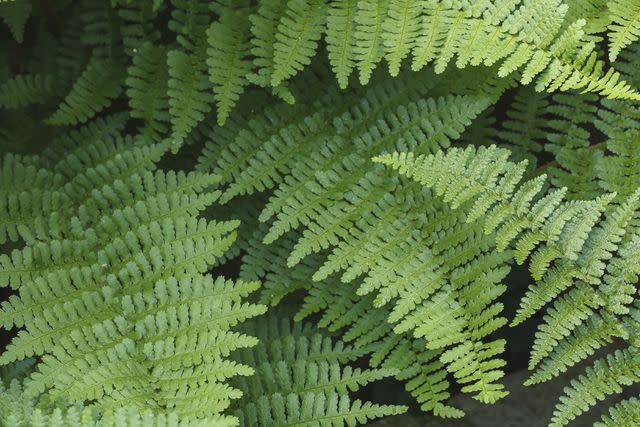
Zones: 2 to 10
Water: Needs about an inch of water each week
Soil: Rich soil
Light: Partial to full shade
Ferns have been a native plant in shady woodlands, and you'll find a slew of different varieties that can suit the shady spaces in your own garden. Ferns tend to thrive most when they do receive a bit of dappled sunshine each day.
Hellebore
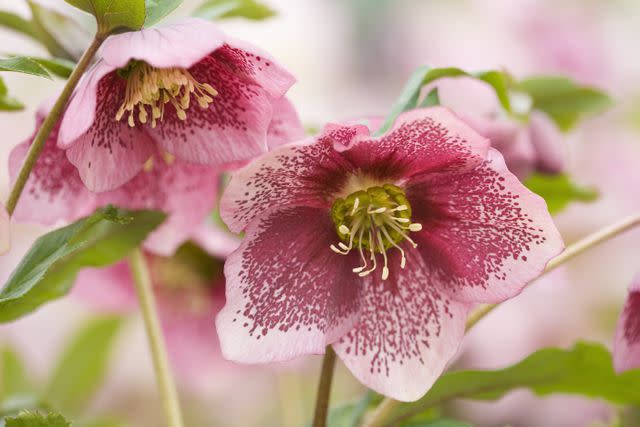
Clive Nichols/Getty Images
Zones: 3 to 9
Water: Keep soil moist, especially when first planting
Soil: Moist, well-drained
Light: Full to partial shade
Hellebores (also known as lenten roses) produce bright blooms in early spring to brighten up your shade garden. They come in a range of colors, from pale pinks and yellows to nearly black shades (perfect for your Goth garden!)
For more Real Simple news, make sure to sign up for our newsletter!
Read the original article on Real Simple.

